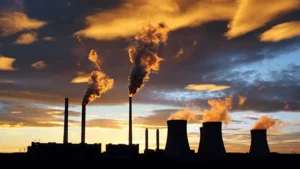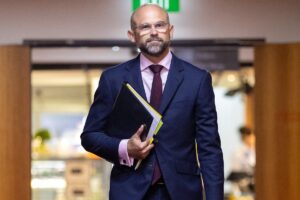The financial year just ended could justifiably be described as one of mixed fortunes for concentrating solar thermal (CST) power development.
Spain’s CST leadership met major headwinds with a change of government and fiscal challenges combining to slow Spain’s CST development. Prominent CST industry player Solar Millennium first announced the conversion of half its massive 1GW Blythe project in the US from CST to photovoltaic generation, before passing into insolvency. Blythe’s prospective new owners now propose the entire project to be PV. And in Australia the Solar Flagships CST project, Solar Dawn, continues to encounter challenges as it works towards financial close.
But the year has been far from bleak for CST. To the contrary, the 2012 fiscal year has seen a broadening and deepening of international investment in CST development, and in research confirming the high value and key role of solar thermal electricity generation.
Studies in Europe, the US and here in Australia all confirmed, and began to quantify, the significant potential of CST to reduce the network investment costs that are the major drivers of electricity price increases. A new AUSTELA study with the Institute for Sustainable Futures and UNSW, to begin in September, will examine the potential network benefits of CST in Australia in detail.
Research here in Australia confirmed the value premium attributable to thermal energy storage with CST generation (though not yet recognised by market mechanisms), and the potential for CST generation to provide the dispatchable backbone of the reliable, secure, low-carbon electricity generation system needed to achieve our long term carbon emissions reduction targets.
Abroad, India continued to implement its ambitious Jawaharlal Nehru National Solar Mission, including approving Asia’s largest CST project at 250MW (using AREVA technology, the same as the Solar Flagships project Solar Dawn). South Africa implemented its Renewable Energy Independent Power Producers Procurement program, with a fourth CST project, of 50MW, approved in May.
Utility scale projects are underway in the UAE (100MW) and Morocco (160MW, the first phase in a 500MW project and part of a 2GW program), Saudi Arabia has announced a US$109Billion plan to produce a third of the oil-rich Kingdom’s power from solar energy including CST by 2032, and China’s 12th Five Year Plan has been updated to include 1GW of CST by 2015.
In the US, a range of CST projects – 50MW, 100MW, 280MW and 392MW projects among them – are in advanced stages of construction, due to come online from 2013.
Australia has struggled to deliver its first large scale CST project, while the rest of the world is forging ahead. But the global CST market is relatively new and rapidly developing, and Australia still has a window of opportunity to be a significant player.
Quietly in Australia, AEMO and the Bureau of Resources and Energy Economics, (BREE), in consultation with a cross-section of energy industry participants, research bodies and industry associations including AUSTELA, have been working on a major update of methodologies and data for forecasting future energy generation costs.
This change in approach has significant implications for the way generation technology improvements are factored into future electricity system design. Reflecting the rapid pace of cost reduction being achieved in renewable technologies and the value and network efficiency potential of CST, the new methodology integrates solar thermal power generation, including thermal energy storage, into the modeled scenarios.
AEMO’s National Transmission Network Development Plan (NTNDP) Planning Scenarios process and BREE’s Australian Energy Technology Assessment (AETA) hold the promise of a more nuanced, transparent and responsive approach to generation cost forecasting that should lay the foundations for real debate about generation and network alternatives in the electricity market, including the high potential value of CST.
This context is important when considering the long-running story of Australia’s Solar Flagships program and of the Solar Dawn CST project, selected under Solar Flagships Round 1.
Whatever the structural shortcomings of Solar Flagships Round 1, it has already delivered in part on its objectives – namely to educate the market and regulators in Australia on issues to be addressed in the integration of large scale solar thermal (and solar more broadly) projects into the national electricity market.
Given that Australia is coming from a standing start, with a deeply fossil-fuel oriented generation and transmission system, and a concentrated, vertically integrated energy retail market, it should not surprise anyone that Australia’s first truly large-scale CST project has confronted daunting challenges in getting to market.
The continuing challenges of Solar Dawn might be dismissed as a tale of all that is wrong with Australia’s energy policy. Even a large grant from the Commonwealth, a smaller but still significant contribution from the Queensland government (now apparently withdrawn), and project backing from one of Europe’s largest energy utilities, has not been enough to get the project to financial close – at least, not yet.
But a step back is often what is needed in order to take a larger step forward, and there is plenty to suggest that Solar Dawn, and Solar Flagships Round 1, have provided the pause for thought that was needed to refine policy and program design for large-scale solar development going forward.
The larger step forward now depends the lessons of Round 1 being absorbed into the design of a more effective and sustainable Solar Flagships Round 2 – however it is renamed.
An effective program structure must address current market gaps with respect to both capital costs (through a combination of targeted grant funding, access to cost-effective debt, and measures to share perceived technology risk) and revenue.
The formation of ARENA from 1 July and the Clean Energy Finance Corporation are important developments since Solar Flagships Round 1, and provide the institutional structures to address the gaps.
The Federal Government has consistently indicated it would consult with industry in the design of Solar Flagships Round 2 – or its replacement – once learnings from Round 1 were available. A key learning from Solar Flagships Round 1 and recent research, is that our electricity market currently does not provide the mechanisms for the full value of solar power to be monetised, and that the LRET is not sufficient to fill the gap – at least not for so long as financiers remain unfamiliar with CST technology.
Addressing this near-term market revenue gap should logically be a key element of future program structure.
Scale is another area in which the learnings are clear. Projects need not be at 250MW scale to deliver the benefits Australia is investing to achieve; to the contrary, a more sustained program facilitating a range of plant sizes from 30MW to 100MW is more likely to deliver the industry capacity, knowledge-building and investment capability in CST power systems that Australia needs.
The industry consultation process is now key to getting the design right for a more effective program to enable Australia to catch up to the rest of the world in CST deployment, to put Australia in a strong position to realise the value of CST for our future electricity system, and to become a significant player in the developing global CST market.
While it is cold comfort for those who have invested so much in time, energy and money seeking to make Australia’s first utility scale CST project a reality, their efforts will help to pave the way for the projects that will follow.
At the same time, it remains very important for Australia that we begin deployment of large scale solar thermal power generation – as the US, Asia and Europe are already doing – to build CST knowledge and capability in our local market. The evidence shows that this is what will drive costs lower, and enable Australia to realise the value of solar thermal power for our economy.
Andrew Want is the Chair of the Australian Solar Thermal Energy Association and is CEO of Australian solar thermal developer Vast Solar. Andrew is a member of the Review Reference Group for the report ‘Realising the Potential for CSP in Australia’ and represents AUSTELA in AEMO’s and BREE’s Stakeholder Consultation groups.










